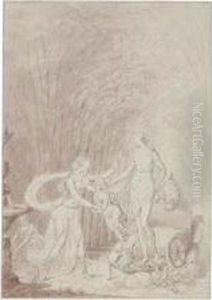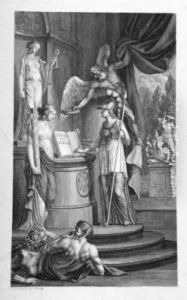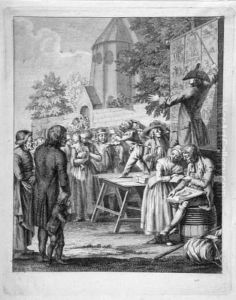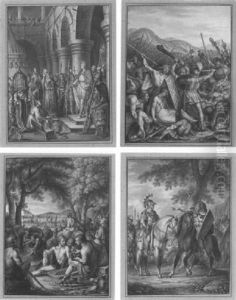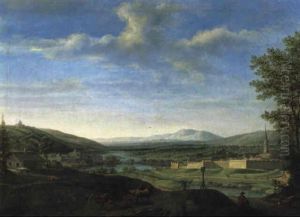Johann Michael Mettenleiter Paintings
Johann Michael Mettenleiter was a German artist, engraver, and painter born on February 24, 1750, in the town of Mengen in Swabia. He began his artistic education in his hometown before moving to Augsburg to further his training. In Augsburg, he studied under the noted engraver Johann Balzer. Mettenleiter's early works were influenced by the Baroque tradition, which was prevalent during his formative years, but as he matured, his style evolved to reflect the changing artistic trends of his time.
Mettenleiter's oeuvre primarily consists of engravings, though he also worked with oil paintings and frescoes. He was particularly known for his portraits, which were often commissioned by prominent members of society, as well as for his religious works. His engravings were executed with a fine attention to detail and a clear understanding of light and shadow, which made them popular during his lifetime.
In 1779, Mettenleiter established himself in Munich, which was then a vibrant center for the arts in Germany. His reputation grew, and he became an important figure in the Munich art scene. In addition to his work as an artist, he was also a teacher and had a significant influence on younger generations of artists. Among his notable students was the painter Georg von Dillis.
Mettenleiter's contributions to the art world during his time were recognized with several honors. He was appointed court engraver to the Elector of Bavaria, which was a prestigious position that reflected his status as a leading artist in the region. His work was widely disseminated, and he was instrumental in helping to disseminate the Rococo and early Neoclassical styles in southern Germany.
Johann Michael Mettenleiter died on February 27, 1825, in Munich. Today, his works can be found in various collections and museums, serving as a testament to his skill and the artistic legacy of the period in which he lived. Although not as widely known today as some of his contemporaries, Mettenleiter's contributions to the arts during the late 18th and early 19th centuries continue to be appreciated by art historians and enthusiasts.
